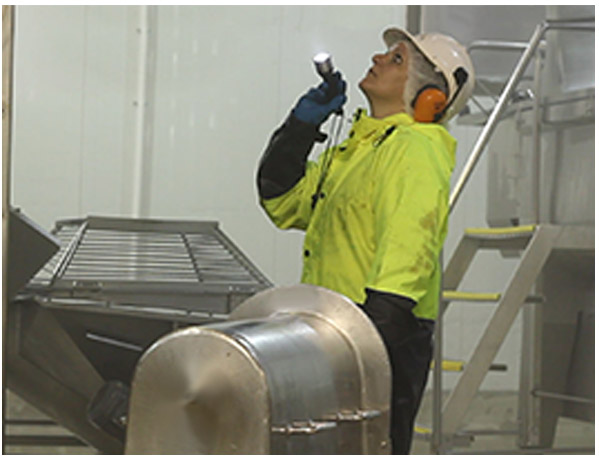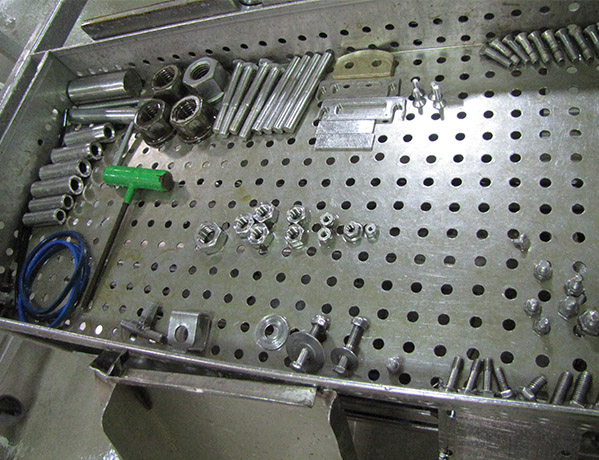Today I’d like to talk a little about audits and USFDA (& export audits) in particular. In the food industry, audits affect everyone, and while I do not regard myself as an expert, after 15 years’ experience, I did get used to what was expected during an audit and have a few thoughts on how to make the outcome more reliable.
The email would come, “Hi Jo, an inspector is coming on this date”. Until I learnt to plan and to prioritize tasks, I would really stress when I knew these audits were going to take place, especially if it was pre-op.
For those that don’t know, an auditor can and will look at anything and everything (Inside, outside, Roof, Drains, Documentation – ANYTHING). Looking back, Carlos was the one auditor that I remembered the most. He was extremely thorough, and I was determined to learn from my experience with these audits, so I wrote a plan to deal with every item that was touched during audits and naturally I called it the ‘Carlos’ plan.
I first met Carlos in 2002 and watching the detailed and wide-ranging inspections he did over the years, gave me a first-hand guide for planning. My list is drawn from my audit experiences & what Carlos expected. Auditors are strict there is no doubt, as they should be, as we eat from these factories & hygiene cleanliness is important.
THE CARLOS PLAN
IMPORTANT RULE OF THUMB; Smells are a big issue, Carlos taught me this. Your plant needs to smell clean before he looked at anything else, secondly the torch would flick on, and it would then be pointed straight to the ceiling. These two things alone told him more than half of what he needed to know!
Below is a typical “pre-audit” list, the exact points would change with the season and the products current in production.
2 Weeks before audit
1. Frigo Pack Room empty dry equipment & rinse out
(exterior wall & doors, dust on grills)
2. Check all chemical labels
3. Clean Vents on the roof, conduits
4. Boiler room including ledges,
5. Check narrow area behind bunded silos for bits of steel etc
and remove to grave yard
6. HWS area cannot have trash or bits & pieces
7. Remove amenities trolley to the container
8. Equipment store (done daily but double check everything)
9. Empty contents of chiller 6 & clean thoroughly
8 Days before audit
10. Clean Stainless drains in the ceilings
11. Clean ceiling Glycol units/Freon units and trays
12. Foam with soap the hallway between cook amenities & cookroom
(fire alarm?) ceiling also
13. Clean all ceilings
5 Days before audit
14. Scrub the three spiral freezer cabinets
15. Clean Tops of ovens and cookroom vents,
16. Spray n wipe control panels, check the rack,
17. Clean Gaps & narrow area between wall & coolers
18. Clean tops of bucket elevators/check the wall above
the steriliser for rust mark
19. Check & wipe the tops of speakers, power pendants, clocks
20. Floor clean, Dock & quick thaw area (if available)
21. Check behind C02 box
22. Chemical store, check all shelving and on top of HWS
(40 litres of each chemical maximum)
23. Clean Mozzie zapper trays
2 Days before audit
24. Clean plant Concrete apron & driveway,
25. check the garden for rubbish
26. Pressure clean the yellow strips @ plant entry on the stairs
near dock office & beside the ingredients room
27. Usual jobs inside 4 formax machines, Augers, wolfking, also include
RMF chain covers, 1109 cover, prebreak Grinder, Bob , 1109 grinder
28. Check the Plant exterior grass area for chemical
(no chemical not bunded)


Notes from my experiences with audits:
-
- The factory should look clean starting from the point of entry (ie, front gate & driveway) – No rubbish or bits and pieces lying around, first impressions are important.
- IMPORTANT the factory should smell clean, a clean factory will smell good.
- Always use the correct point of entry, using foot baths & washing hands.
- Always check chemical labels, standard credit card type plastic labels would crack over time & stickers would fall off. In order to improve our score, I got the chemical labels etched onto stainless. This costs time to check.
- Keep chemical store clean & tidy.
A different idea
Over the years, I thought about our cleaning program, and how I could further improve. I decided to create an information folder that included photos, video & other documentation of the cleaning. How would they know what we would do at night? They were not there to view it, so I decided to film parts of it & put it on DVD for them. This folder was available for them to view on any visit, so they could see what happened every night
My thoughts
I found it important to have a cleaning plan that included all areas of the plant, including hard to reach and out of the way areas to be a really critical point. My standard process is to have each task on the right cycle (daily, weekly, monthly, etc.), with a good plan, the right equipment, training and a methodical and structured approach to cleaning, each job can be done properly.
We also incorporated the above list into our day to day, week to week & month to month planning. This reduced my stress levels and gave me piece of mind that the plant was at the expected level always, and the auditor could turn up any time.
If you have any questions, or you are having issues with ingress please give me a call on 0409 123 850 or email me, I’m happy to offer advice, training and consulting.
Jo Field
Euro Pumps
